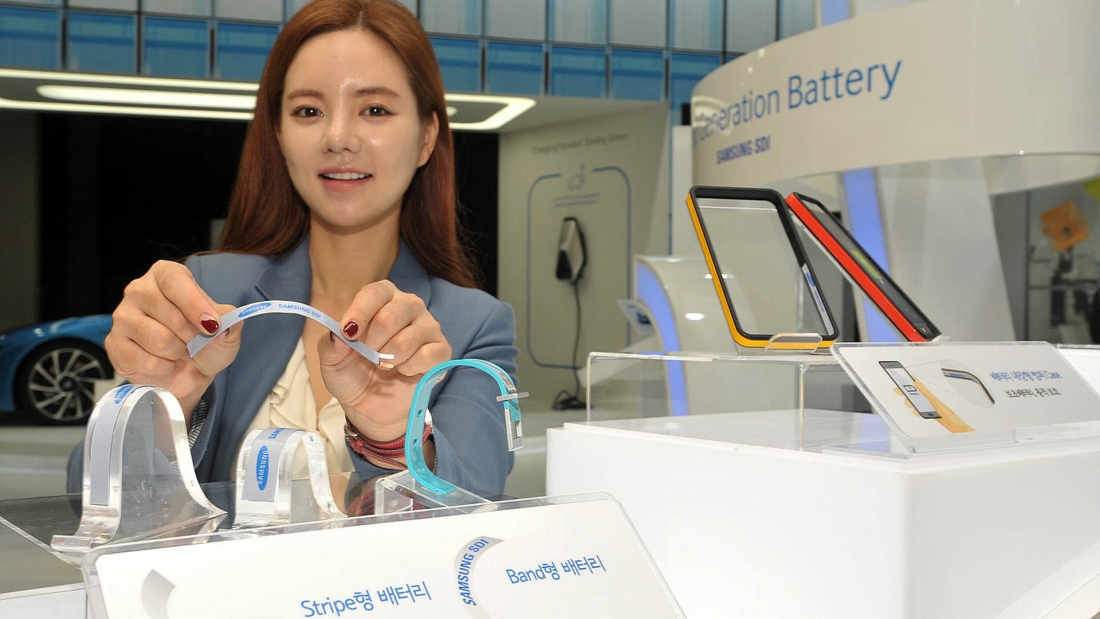Samsung Shows Off New Flexible Batteries For Wearables
It is no secret that batteries are one of the greatest limiters of wearable technology. They are bulky, rigid, unstable, and need a better power to size ratio. Batteries are singularly responsible for the design and limitations of current wearables. Samsung SDI, though, is looking to change that. According to Business Wire, the South Korean company debuted two prototype batteries at InterBattery 2015, called Band and Stripe. Band is designed to fit within the band / strap (hence the name) of a smartwatch or fitness tracker. The flexible battery can add 50% to a watch’s standard battery and can withstand more than 50,000 bends. Stripe, though, is actually the more interesting of the two technologies. Using cutting-edge materials the team at Samsung SDI has been able to create a flexible battery which is 0.3mm thick. This allows Stripe to power almost any conceivable wearable device, from a necklace or hairband, to a t-shirt or belt. The company has also figured out a way to increase the energy density of Stripe, allowing it to provide more power than a battery of its size typically could.
Both the Band and Stripe batteries are prototypes and it could be years (if ever) before we see the technology incorporated into something we can actually purchase. That said, Samsung SDI’s new batteries are a step in the right direction; something needs to be resolved with energy storage in wearable devices. Whether that ultimately comes from technology such as this, or advancements in organic batteries, or even fuel cells, who knows. Or perhaps we need to rethink how wearables consume power. Either way something will change; battery technology needs to evolve in order for a number of emerging technologies to find mass appeal.
Continue reading





